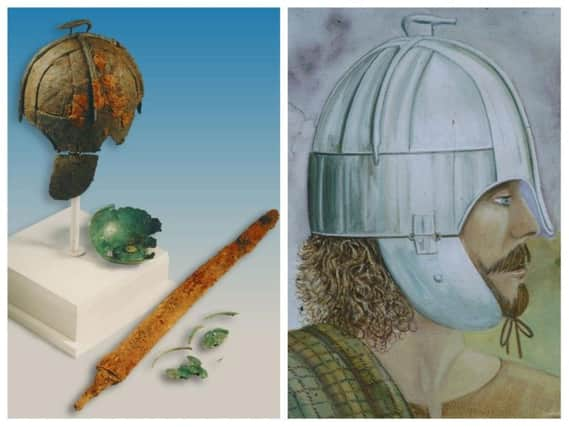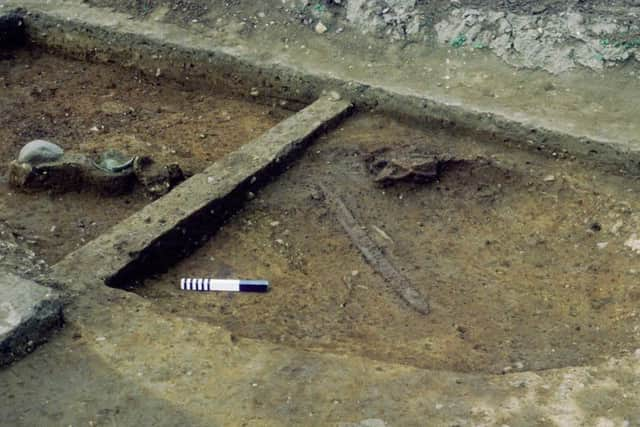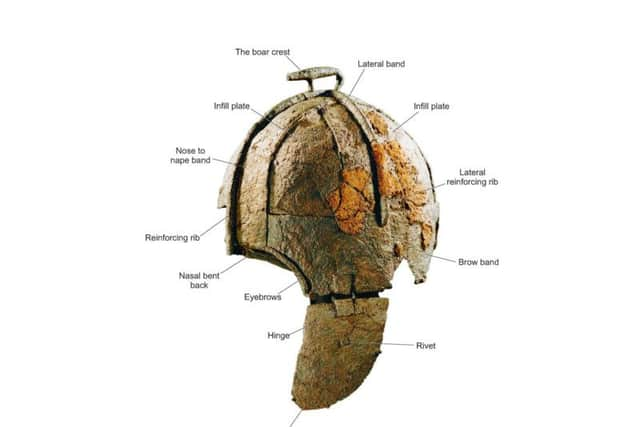Who was the ‘Wollaston warrior’? New book reveals details of Anglo-Saxon remains excavated in Northamptonshire quarry


In 1997 archaeologist Ian Meadows uncovered a seventh-century warrior burial in Wollaston Quarry.
The excavation featured the best preserved Anglo-Saxon helmet ever found in a burial context – its boar crest remains only the second archaeologists have ever seen.
Advertisement
Hide AdAdvertisement
Hide AdThe helmet was discovered while the Museum of London Archaeology (MOLA) worked on behalf of Hanson UK and the results from the excavation have been published in a new book called The Pioneer Burial.


"The Wollaston ‘Pioneer’ burial might easily never have been found," said a MOLA spokeswoman.
"It was uncovered 100 metres away from the area Hanson UK (then Pioneer Aggregates UK – hence ‘Pioneer’ burial) had planned to excavate for gravel extraction.
"It was only when we metal detected the full development area as part of our archaeological works that strong signals were recorded, and the top of copper alloy hanging bowl was exposed."
Advertisement
Hide AdAdvertisement
Hide AdFound alongside the warrior's remains and the boar-crested helmet were a pattern welded sword and a hanging bowl.


Researchers say the helmet is only the fourth ever found in an Anglo-Saxon burial from England, and only the second known decorated with a boar crest.
"The grave goods mark the ‘princely’ burial as special; each is significant for its rarity and status or the quality of its workmanship," said the MOLA spokeswoman.
"It is by far the best-preserved example, with a complete profile of one side remaining intact.
Advertisement
Hide AdAdvertisement
Hide Ad"The boar crest evokes scenes recorded in Saxon poems such as Beowulf where boar-adorned helmets are mentioned six times, including the description of a funeral pyre 'heaped with boar-shaped helmets forged in gold'."
MOLA researchers say they don't know for certain whether the person buried at Wollaston was pagan or Christian, or a mix of both, though the burial method had more similarities with pagan practices.
At the time of the burial, the region was undergoing gradual reconversion to Christianity and there was a shortage of priests in Mercia and Middle Anglia.
In the sixth or early to middle seventh centuries, the Middle Angles (a group of small, independent territories) were incorporated into the kingdom of Mercia, with Peada, son of Penda of Mercia, installed as sub-king of the Middle Angles.
Advertisement
Hide AdAdvertisement
Hide Ad"Though it is not known who controlled the Wollaston area, it may be that this burial was of a ruler of a formerly independent tribe in the Middle Angle area incorporated into Mercia, or a member of their family," said the MOLA spokeswoman.
"In light of this context, it may well be that the burial’s location was chosen for its prominence: it is at a strategically significant position next to the River Nene, adjacent to a Roman road and at a possible important land division.
"Circumstantial archaeological evidence also suggests that the burial was once covered by a mound, which would have been visible from some distance away.
"Whoever was buried here, it seems that they were interred in a way that was intended to be seen, as a mechanism to influence the population during a period of change."
The Pioneer burial artefacts have been kept together and are on long-term display at the Royal Armouries in Leeds.